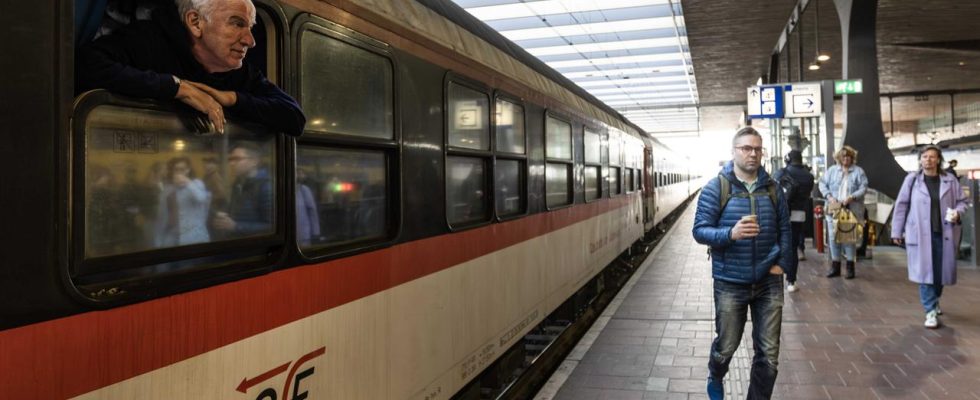A night train connects Berlin with Brussels three times a week. The EU wants to support the expansion of the network. However, there is still a lot to be done when it comes to cross-border rail connections.
Friday a week ago. It’s just after 10am on a sunny spring morning and Brussels Midi station is experiencing a premiere. It’s arriving: the first night train from Berlin. After years of hiatus, the new line will once again connect the two European capitals three times a week. Regular travel time: just under ten and a half hours. Seats cost from 49 euros each way, berths from 79 euros, comfortable beds including breakfast from 109 euros. The passengers on the maiden voyage are enthusiastic despite a 50-minute delay.
“It was very nice. A bit long maybe, but you sleep most of the time. The staff was nice, we had everything we needed on board. It’s definitely a good option,” says one traveler. Another finds: “The carriages were older than expected, but the comfort is great and it’s a better way to travel.”
Number of offers doubled since 2020
People in Brussels are also happy about the new connection. This would give even more people the opportunity to visit the Belgian metropolis with an environmentally friendly means of transport, says Jeroen Roppe from the city’s tourist office. “Brussels can be reached by train in less than two hours from Paris, Cologne, Amsterdam and London. Train connections are simply extremely important for us.”
In any case, the night train is currently celebrating an amazing comeback in Europe. Since 2020, the number of connections has more than doubled from around 90 at the time to over 200 today. “Nightjets” or “Sleepers” travel between Berlin and Warsaw, Zurich and Budapest or Stuttgart and Venice. A “Night Express” connects Hamburg with Malmö in Sweden.
EU supports pilot projects
The EU Commission wants to support the expansion of the network and has so far funded ten pilot projects. The aim is for night trains to be able to use more of the high-speed routes within Europe in the future, thus competing with airplanes not only in terms of price and sustainability, but also in terms of travel time.
Adalbert Jahnz, spokesman for the EU Commission, says: “There is great demand for rail travel in Europe, but the market needs to improve, especially for cross-border connections.”
Lower train path prices at night?
The network “Back-on-Track” agrees. The initiative wants to get more night trains on the tracks across Europe and would like much more political support for this, says its spokesman Patrick Neumann. “The basic framework conditions have to be improved, for example by lowering track prices at night. Every kilometer costs money, every detour has to be paid for,” said Neumann.
“And for international travel, VAT is charged on the tickets in the countries where the ‘Sleeper’ drives, i.e. Germany, Belgium and the Netherlands, but no longer in almost all other countries. If you fly, you don’t pay any either. These are injustices that also need to be corrected in terms of climate protection.”
invest in EU countries differing much
Anna Deparnay-Grunenberg, the rail expert for the Greens in the European Parliament, sees three major problems in expanding night train connections. She says: “Firstly, not all routes are in good shape because the investments made by EU countries in the rail networks vary greatly.”
Secondly, there are too many different national standards, such as track gauges, which make it necessary to change locomotives at the borders, which leads to higher ticket prices. Thirdly, the train is not competitive compared to the plane because there are no booking platforms and there are not enough modern sleeper trains.
“We always have smaller projects where people say: Okay, we’ve now bought old rolling stock from Eastern European railways, we’ve renovated it somehow. But that doesn’t meet the standard. I think you could get a lot more people excited about it, to take the night train,” says Deparnay-Grunenberg.
Demand greater than supply
Currently, the tickets for the existing lines are usually sold out quickly, which according to the Green MEPs clearly shows that the demand is already far greater than the supply.
In any case, many passengers on the premiere journey between Berlin and Brussels want to make further journeys on the night train. “I thought it was great and can only recommend the train instead of flying, also for environmental reasons,” said one traveler. “We had fun.”

